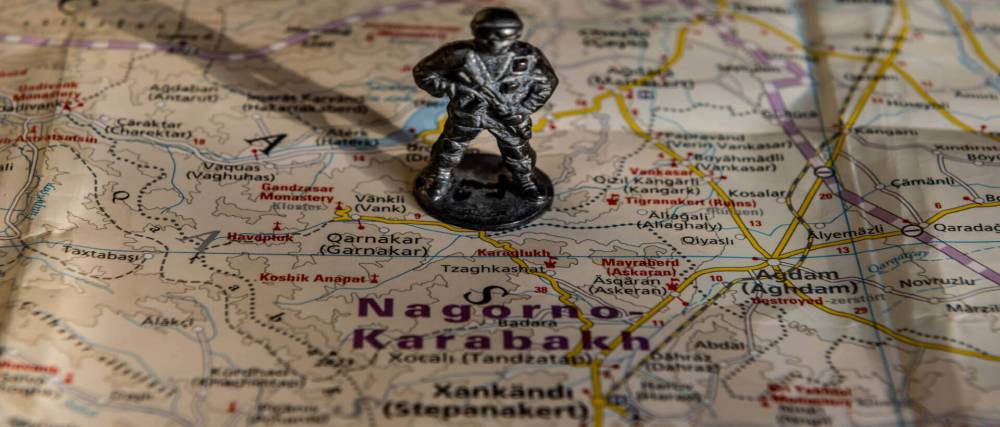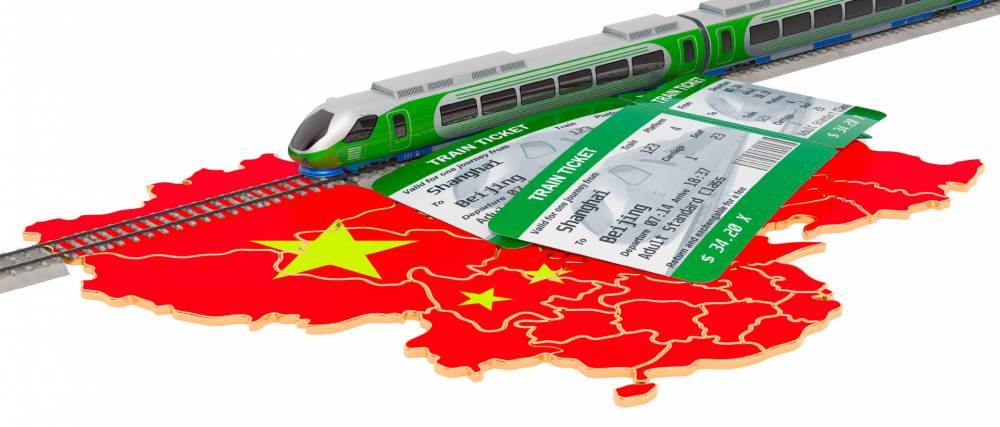17 Nov-The China factor and India’s strategic thinking on RCEP
 Published on
Nov-24-2020
Published on
Nov-24-2020
· Mega trade bloc RCEP takes off-The Hindu-16th November
· RCEP: Door still open for India, may take part in meets as ‘observer’-The Indian Express-16th November
· Explained: The China factor and India’s strategic thinking on RCEP-The Indian Express-17th November
· Explained: What are the economic implications of India opting out of RCEP? - The Indian Express-17th November
(GS 2- regional groupings and agreements affecting India’s interests; GS 3- Effects of liberalization on the economy)
In News
· The Regional Comprehensive Economic Partnership (RCEP), a mega trade bloc comprising 15 countries led by China came into existence on 15 November 2020.
News Summary
o RCEP was signed at the 4th Regional Comprehensive Economic Partnership Summit as a part of the 37th ASEAN Summit virtually hosted in Hanoi, Vietnam.
o All members would have to ratify the RCEP within two years before it becomes effective.
About RCEP
· RCEP is a comprehensive free trade agreement between the 10 ASEAN Member States and Australia, China, Japan, South Korea and New Zealand.
· It was at the 21st ASEAN Summit 2012 in Phnom Penh, Cambodia that the framework of RCEP was endorsed.
Aim of RCEP
o Its aim is to lower tariffs among the member nations.
o Open up trade in goods and services.
o To make it easier for products and services of each of member to be available across the region.
Scale of RCEP
o Largest free trade bloc in the world even bigger than the US-Mexico-Canada Agreement and the European Union.
o Members of the RCEP make up nearly a third of the world's population.
o Represents around 30% of global GDP.
Benefits of RCEP agreement
o RCEP is expected to help reduce costs and time for companies by allowing them to export a product anywhere within the bloc without meeting separate requirements for each country.
o Seeks to promote manufacturing especially MSMEs.
o Promotion of investment to help emerging economies catch up with the rest of the world.
o It also touches on intellectual property.
o Help member nations to bounce back from the COVID effect.
Challenges before RCEP
o The challenge before RCEP is that there are 15 incredibly diverse countries at different stages of development and with completely internal priorities.
Exclusions from RCEP
o Following have been left out from RCEP-
o Environmental protections
o Labour rights
o RCEP members struggled to fully agree on some of the provisions on digital trade.
India’s Reasons for Not Joining RCEP
o During the 3rd RCEP Leaders’ Summit held in 2019 in Bangkok, India stated that the current structure of RCEP did not reflected the RCEP Guiding Principles or address the outstanding issues.
o India took a call that no agreement at this time was better than a “bad agreement”.
India’s Demands from RCEP
o India had been seeking the following before walking out of RCEP in Nov 2019-
o Keep Dairy, Auto and certain textiles out of the pact.
o Option to stop imports or raise duties in case of sudden flooding of market.
o Stricter investment regime and dispute management.
o Stricter ‘origin of product’ norms to curb abuse of FTA.
o Change in base tariffs from 2014 to 2019.
o To exclude most-favoured nation (MFN) obligations from the investment chapter.
India’s Trade Balance with RCEP Members
o India had a clear-eyed calculation of the gains and costs before walking out of the RCEP.
o Unfavorable trade deficit with RCEP members.
o India registered a trade deficit in 2018-19 with 11 RCEP nations.
o The growth in trade (CAGR) with partners over the last five financial years was a modest 7.1%.
o A “possible circumvention” of rules of origin (the criteria used to determine the national source of a product) had not been addressed.
o Concerns regarding data localization.
o Inadequate provisions in the deal to prevent countries from routing, through other countries, products on which it would maintain higher tariffs.
Domestic Compulsions of India
o Its decision was to safeguard the interests of industries like agriculture, dairy, textile, steel among others.
o Give an advantage to the country’s services sector.
o Absence of auto-trigger mechanism to raise tariffs on products when their imports crossed a certain threshold.
o India felt the agreement would force it to extend benefits given to other countries for sensitive sectors like defence to all RCEP members.
o RCEP also lacked clear assurance over market access issues in countries such as China and non-tariff barriers on Indian companies.
China’s Presence as a Factor
o Concerns about cheap Chinese goods entering the country loomed large before India decided to walk out from RCEP.
o Inadequate protections against surges in imports.
o In view of huge steel capacity available with China, the Indian Steel sector could have faced threat from cheap Chinese steel imports.
o Under RCEP such imports would have got the advantage of preferential tariff and harmed the Indian Steel Industry.
Geo-Strategic Concerns of Chinese Presence
o Even though India walked out of RCEP in Nov 2019, the recent escalation of tensions with China amid the ongoing standoff at the LAC in Ladakh appears to have played a role in shrinking the space for any argument to join the RCEP.
Fallouts of India not Joining
o There are concerns that India’s decision would impact its bilateral trade ties with RCEP member nations, as they may be more inclined to focus on bolstering economic ties within the bloc.
o The move could potentially leave India with less scope to tap the large market that RCEP presents —the size of the deal is mammoth, as the countries involved account for over 2 billion of the world’s population.
o India’s decision could impact the Australia-India-Japan network in the Indo-Pacific.
o It could potentially put a spanner in the works on informal talks to promote a Supply Chain mechanism.
Walking out of RCEP doesn’t mean
o India won’t back out from its Act East policy (the bedrock of India’s economic policy.
o India’s engagement with other trading partners in the region and beyond would continue.
o The decision on RCEP won’t alter India’s approach and vision of a free, open, rule-based and inclusive Indo-Pacific.
China’s Objectives
o This is the first time that China has signed a regional multilateral trade pact.
o China is trying to overcome Covid-19 disruptions and resurrect the supply chain mechanism and possibly put pressure on US.
o Increase its sphere of influence in the region through trade and commerce.
The Japanese Angle
o Japanese negotiators worked hard to keep the RCEP agreement “open for accession by India”
o That Japan led the drafting of the Minister’s Declaration on India’s participation in RCEP is a reflection of the cooperation between India and like-minded countries especially the Quad countries (Australia, the United States, Japan) to have “resilient supply chains” in future.
Other Trade Agreements of India
o For India, not be a member of RCEP doesn’t makes a significant difference as it has FTAs with ASEAN, and CEPAs (Comprehensive Economic Partnership Agreements) with Japan and South Korea already.
o Over 20 negotiations are underway-
o India currently has agreements with members like the ASEAN bloc, South Korea and Japan and is negotiating agreements with members like Australia and New Zealand.
o Two reviews of the India-Singapore CECA have been completed.
o the India-Bhutan Agreement on Trade Commerce and Transit was renewed in 2016.
o and the India-Nepal Treaty of Trade was extended in 2016.
o Eight rounds of negotiations have been completed for the review of the India-Korea CEPA, which began in 2016.
o India has taken up the review of the India-Japan CEPA and India-ASEAN FTA with its trading partners.
o It would serve India’s interest to invest strongly in negotiating bilateral agreements with the US and the EU, both currently a work in progress.
Future Options for India
o Yes, India can still become a part of RCEP once it submits a request of its intention to join the pact “in writing”.
o India may participate in RCEP meetings as an “observer”.
o India, as an original negotiating participant of RCEP has the option of joining the agreement without having to wait 18 months as stipulated for new members.
Lessons for India & Way Ahead
o Recent debate about RCEP offers lessons in foreign policy as much as in the trade domain.
o On the one hand we should not go back to the old dogmas of economic autarky and the import substitution but at the same time embracing the new dogma of globalization without a cost-benefit analysis would be equally dangerous.
o One cannot be a rising power without being a rising economy.
o To do that, one has to build its domestic capacities.
o Building on national capacity doesn’t make one anti global or inward looking protectionist.
o On the contrary, if one don’t have capacities, one ends up as a market for other people’s goods. If one want to actually participate more vigorously in the global economy, one must build stronger domestic capacities, and do what it takes for the gaps to be closed.









